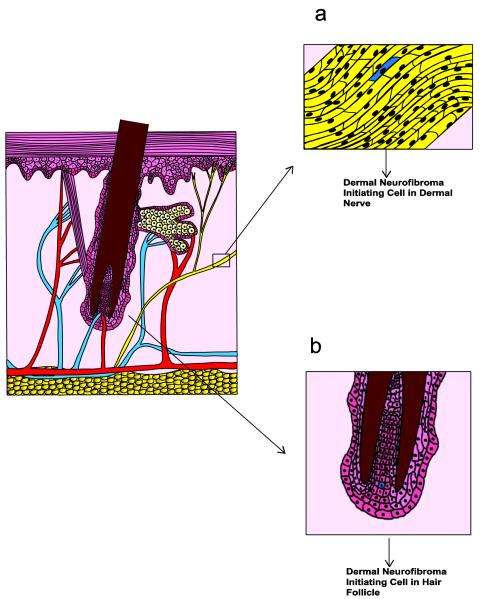Fig. 5.
A comparison of two proposed sources of origin for dermal neurofibromas. The diagram to the left illustrates a cross-section of skin including the epidermis, dermis and subcutis. A hair shaft, together with its associated follicle and sebaceous gland, is evident in the center of this section. In this first scheme (a), dermal neurofibroma pathogenesis occurs when the remaining functional copy of NF1 is lost in a Schwann cell (indicated in blue) within a small cutaneous nonmyelinating nerve. Although this model has long been attractive, it does not explain why dermal neurofibromas typically do not develop in mice with conditional knockouts of Nf1; the promoters used to drive Cre recombinase expression in many of these animals would be expected to be active in small cutaneous nerves just as they are in larger nerves. An alternative source for dermal neurofibromas (b), which is now supported by findings made with recently derived genetically engineered mouse models, is that they are derived from skin-derived precursors (SKPs), a multipotent neural crest-derived precursor population that is located within hair follicles. In this scheme, neurofibroma pathogenesis is initiated when the remaining functional copy of NF1 is lost in a SKP (indicated as a blue cell within the hair follicle).

